Gooseberry and Bay Leaf Preserve
I love the summer, even though as I get older I learn to appreciate each season for it’s own beauty and seasonal gifts from nature. There is still something magical about summer, it’s synonymous with holidays, freedom and berries. Now I know that’s perhaps a bit shallow but I can happily say that I learned to fall in love with a fruit this summer that I normally would have ignored.
I never really liked gooseberries and could not understand why people would go mad for them. This gooseberry and bay leaf jam is the last recipe that I shall make with the fruit this year, as the season is drawing to a close. I did learn though that later on in the season the berries become softer and actually slightly sweeter, however do not be fooled they are still very tart!
My pantry is starting to take shape with all the wonderful preserved summer delights. A few jars of pickled beetroot, 6 jars of strawberry and redcurrant jam, mulberry preserve, 4 jars of raspberry jam, 2 bottles of raspberry vinegar, 1 bottle of mulberry vinegar, 5 jars of sweet and sour curried french beans, blackcurrant cordial and now the gooseberry and bay leaf preserve. It’s looking good and healthy!
As I cooked a small batch of this gooseberry and bay leaf jam I realised that making jam is not necessarily a big drama. It went fairly quick and before I knew it, my lovely green gooseberries turned into a brilliant orangey colour and it was done. I remember making jam as a child with mum, it used to be an big occasion with a large pan on the go and all that. This showed me it does not necessarily need to be that way and that you can make various different flavours in a jiffy!
Here are some of my other favourite gooseberry recipes.
- Gooseberry Flapjack
- Gooseberry and Polenta Slice
- Gooseberry Ginger Ale, Memories of My Grandmother
- Gills Baked Gooseberry and Ginger Nut Cheesecake
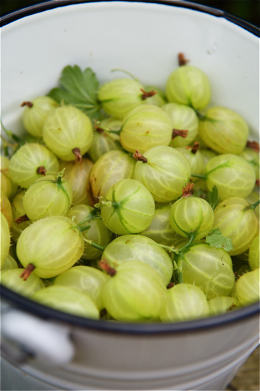
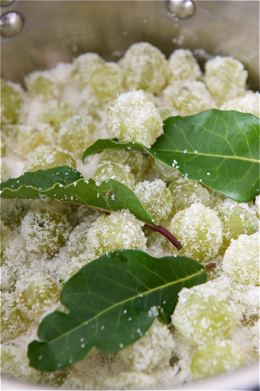
- 600g gooseberries
- 600g sugar
- 3 fresh bay leaves
Top and tail the gooseberries, wash and drain in a colander.
Place the gooseberries, bay leaf and sugar into a heavy base saucepan over medium heat. Gently melt the sugar. Once the sugar has dissolved turn the heat up and bring to a vigorous boil.
Wash the edges of the pan with a pastry brush dipped in hot water; this will prevent the jam from crystallising. Do not stir the jam while it is boiling, this will encourage crystallisation.
Boil the jam for about 10 -12 minutes, temperature 104°C – 106°C; this is the ideal setting point for the jam.
I do not use pectin or pectin rich sugar and for that reason it is crucial to measure the temperature and follow the few rules outlined above.
When the correct temperature is reached remove the jam from the heat.
Have your jam jars ready, cleaned and sterilised, as it is important to decant the hot jam as soon as possible.
Place a small cartouche of parchment paper directly on to the hot jam and close the jar immediately whilst the jam is hot.
Make sure your hands are clean or wear disposable gloves.
Cool the jam jars, clean and label them.
Makes 3 340g jars of gooseberry conserve
Food Fanatics Tips
Crystallisation of Jam: It’s pretty annoying when this happens. Normally it’s only visual once the jam has cooled down completely. I have three simply preventable reasons why crystallisation could happen.
- - is if the sugar and fruit start to boil before all the “raw” sugar crystals have dissolved.
- - is once the sugar has dissolved and the jam reached the vigorous boiling stage you did not wash the edges with a pastry brush dipped in hot water. As the “raw” sugar crystals get stuck to the edge of the pan and falls back in to the boiling syrup,the larger un-dissolved crystals accumulate molecules and this encourages the growth of large crystals know as crystallisation.
- -is that you should never stir boiling jam or sugar syrup for that matter. If you do stir the boiling syrup it knocks the sugar crystals together and encourages the formation of larger crystals and crystallisation sets in once cooled.
Sterilising the jars: This is one of the most crucial tasks and you should never cut corners . If you not do this properly you might find your jam becomes mouldy and ferments sooner than expected.Preheat the oven to 100°C. Wash the jars in hot soapy water; do not dry them with a tea towel. Place the damp jars and lids on a clean baking tray; try not to touch the jars and lids on the insides. Place them in the preheated oven for about 40 minutes. Let the jars cool slightly before you scoop in the jam.
Other points are -never pour cold liquid in to hot glass jars, you will end up with broken glass, - take extra care when sterilising the jars, as if they are overheated they might explode.
Print Recipe Print Recipe with Photo Email this Recipe

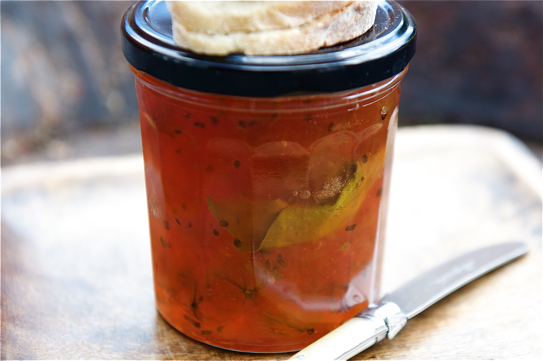


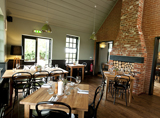
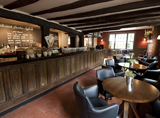
I have just made this and it is delicious. I love the herby taste that the bay leaf gives.
This look really nice!! Gloria